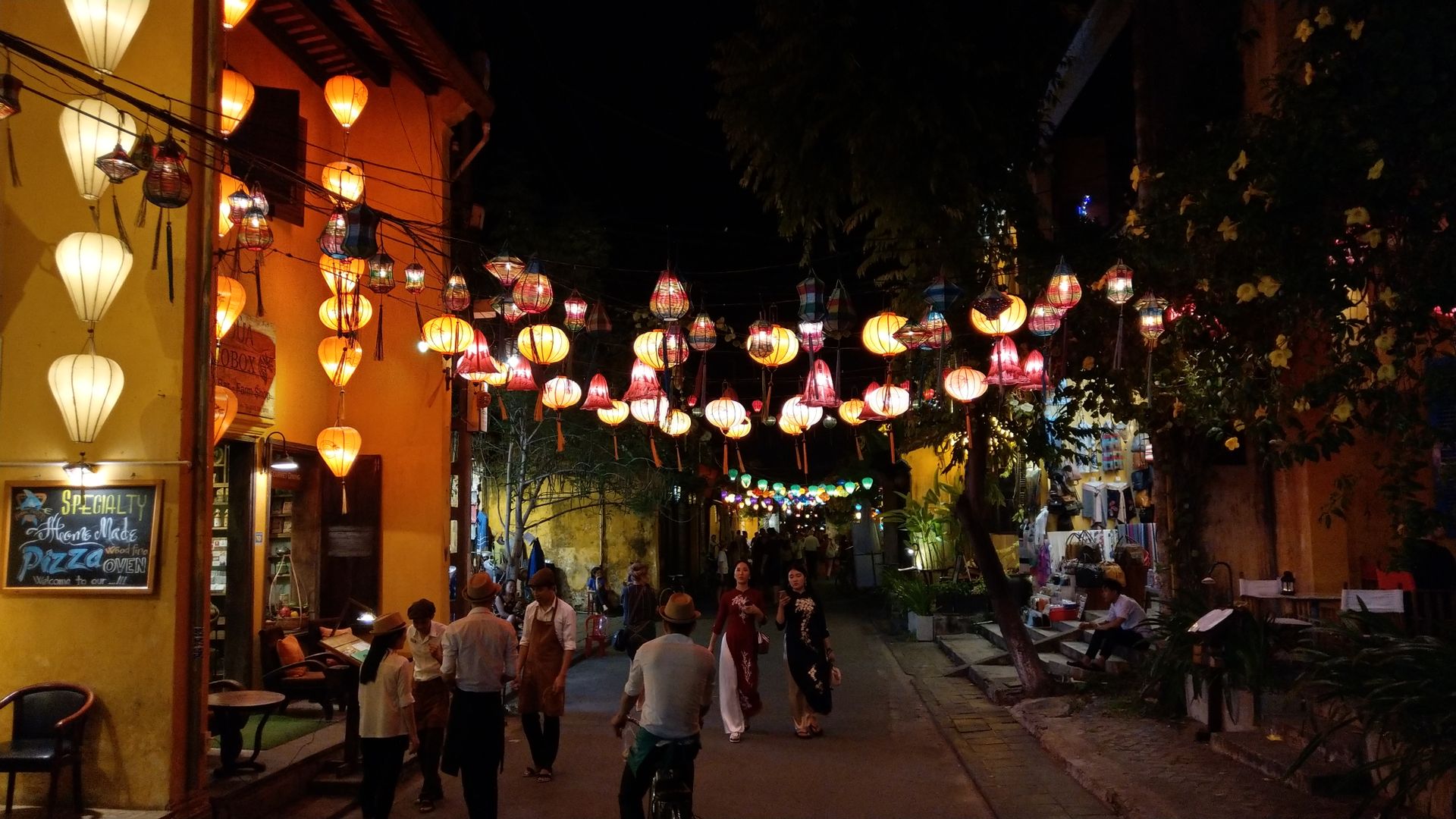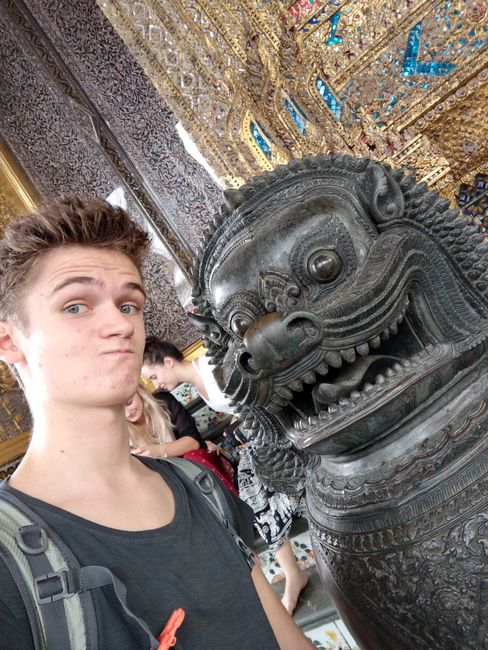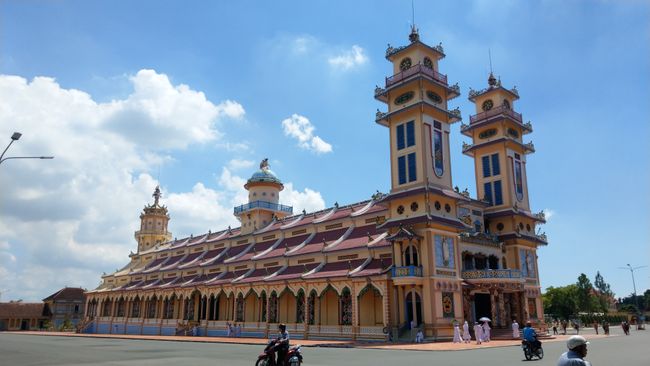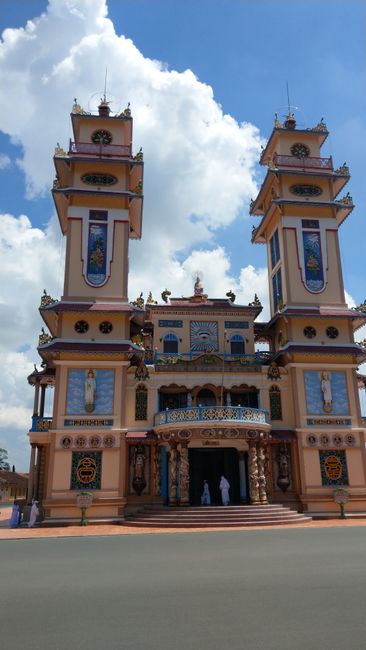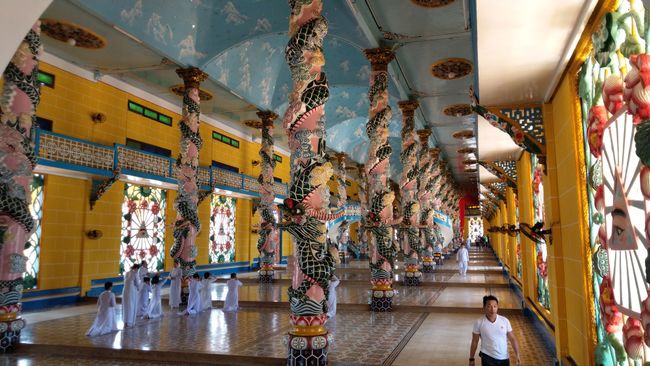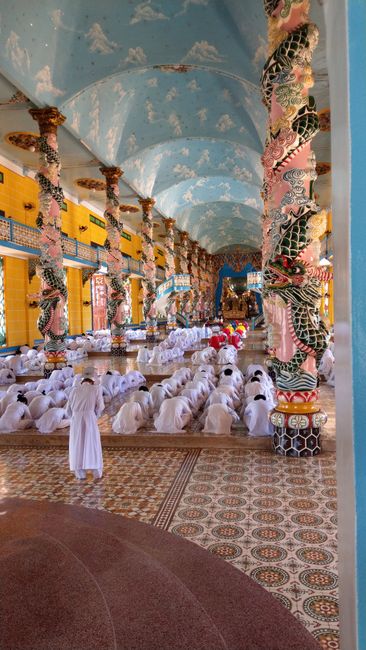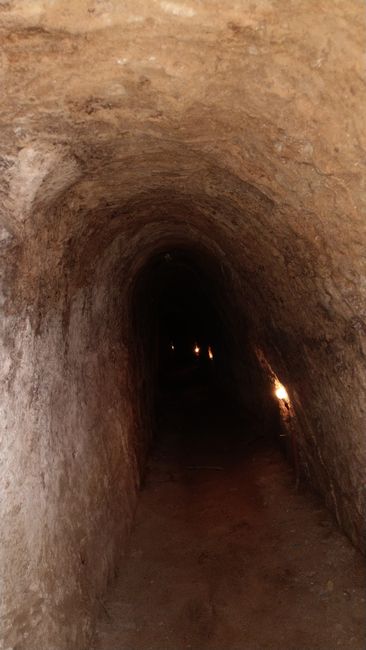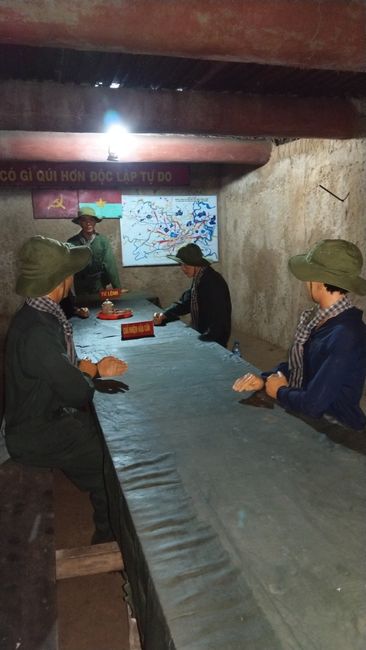21.10. Through the tunnels
ਪ੍ਰਕਾਸ਼ਿਤ: 21.10.2018
ਨਿਊਜ਼ਲੈਟਰ ਦੀ ਗਾਹਕੀ ਲਓ
Today we had planned to visit a midday ceremony at the Cao Dai Temple, which is located just outside the city. This temple is the religious center of the peaceful Cao Dai sect, a hybrid religion that emerged during times of war and includes elements of Buddhism, Christianity, and Confucianism. This blend is already peculiar, but it is also highlighted by the architecture of the temple. With two towers and a grand nave, the rough structure resembled a Christian church, but the design was adorned with a burst of colors, columns winding with dragons, and staring eyes, almost like a kitschy Asian children's playhouse.
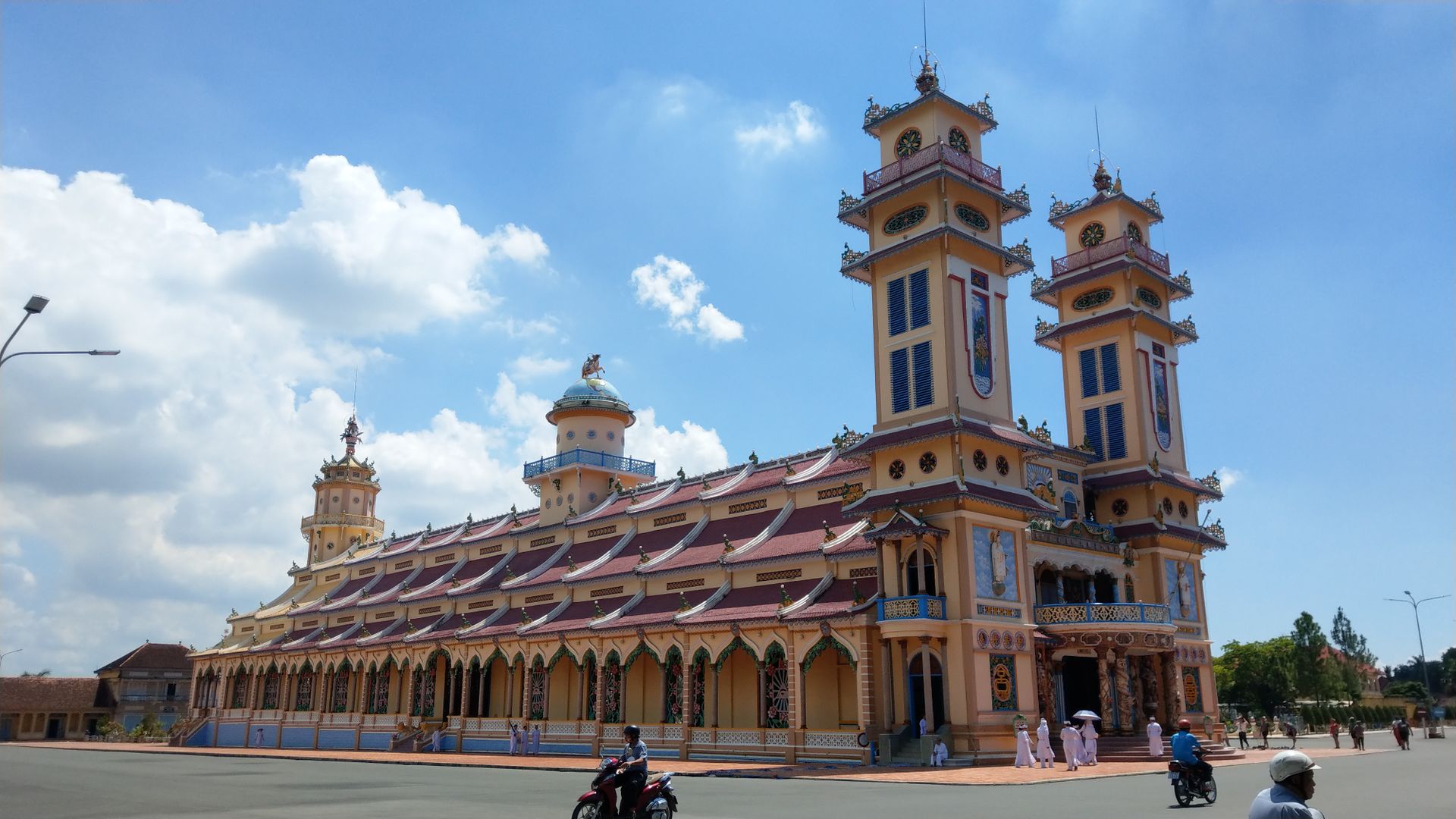

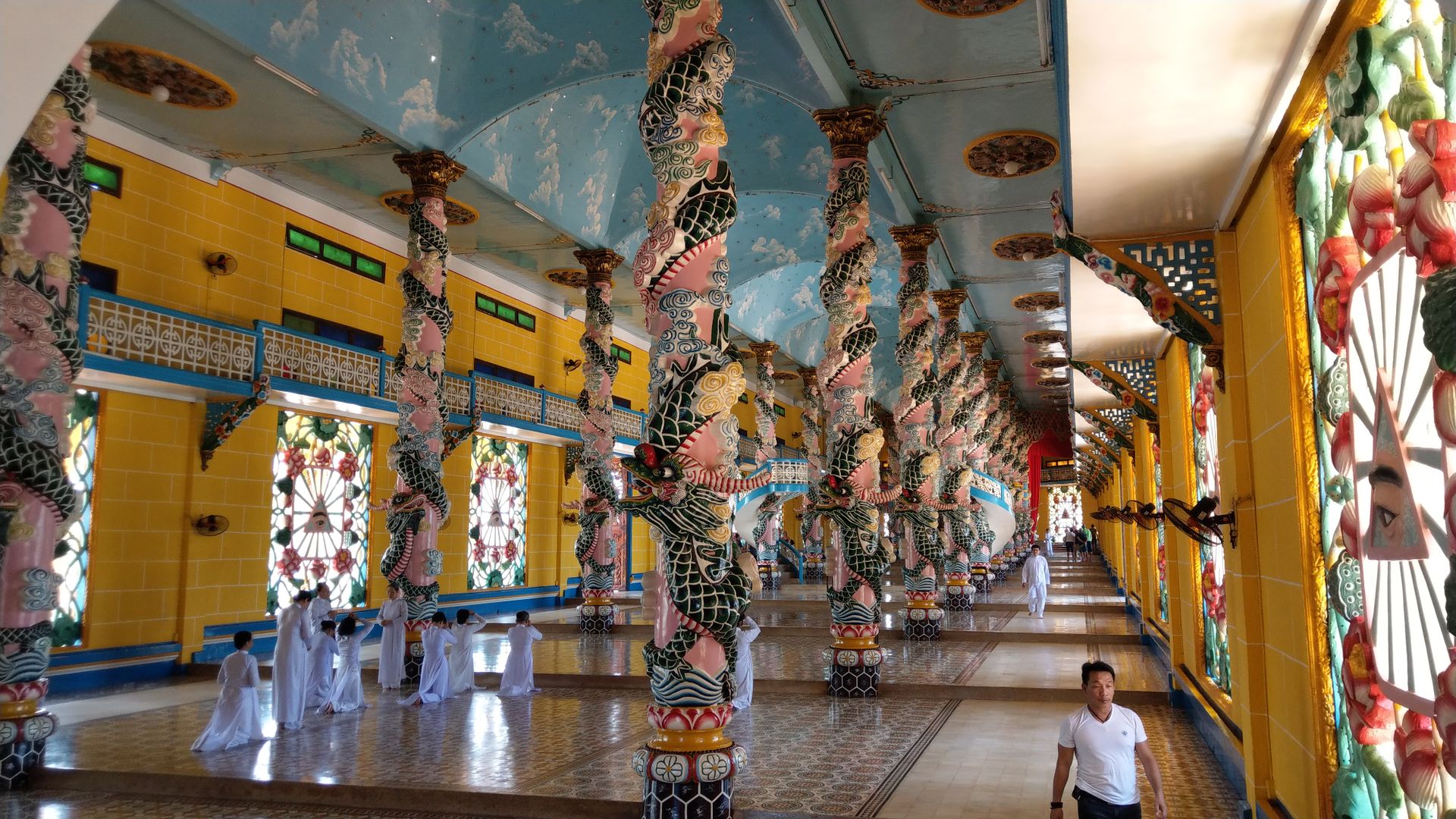
We were able to observe the ceremony from a balcony. Everything followed a strict procedure, and everyone seemed to know where and when to stand and kneel, creating a solid structure.
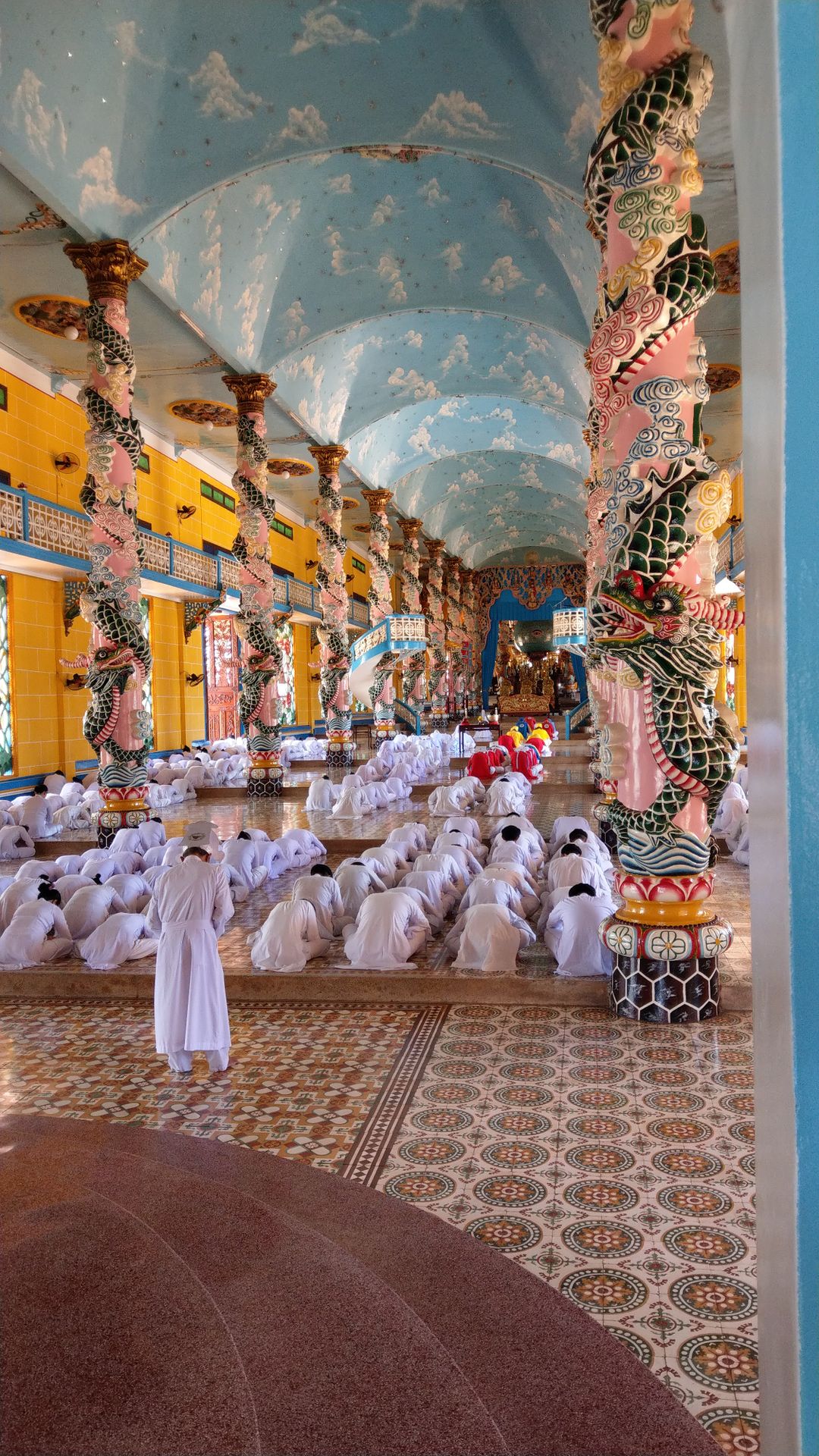
We were allowed to watch for about half an hour before we were sent out and made our way to the Cu Chi Tunnels. These tunnels make up a system of over 200 kilometers, covering a vast area and accommodating up to 17,000 people who sought shelter from the bombings of the U.S. troops. The capitalist power entered communist Vietnam in 1955 in an attempt to enforce its system.
As a result, the Vietnamese suffered five million deaths.
These tunnels were not dug with machinery, but rather with hoes and baskets, as explosions would have been too loud and would have alerted the enemy. The tunnels were organized by functionality: kitchens, weapon and supply depots, sleeping quarters, meeting stations, and combat tunnels. The actual rooms were small, but unlike the tunnels, one could at least stand in them. Moving through these tunnels required crawling or crouching, sometimes in complete darkness. Spending several months there must have been terrible, especially since children were also housed or even born there.
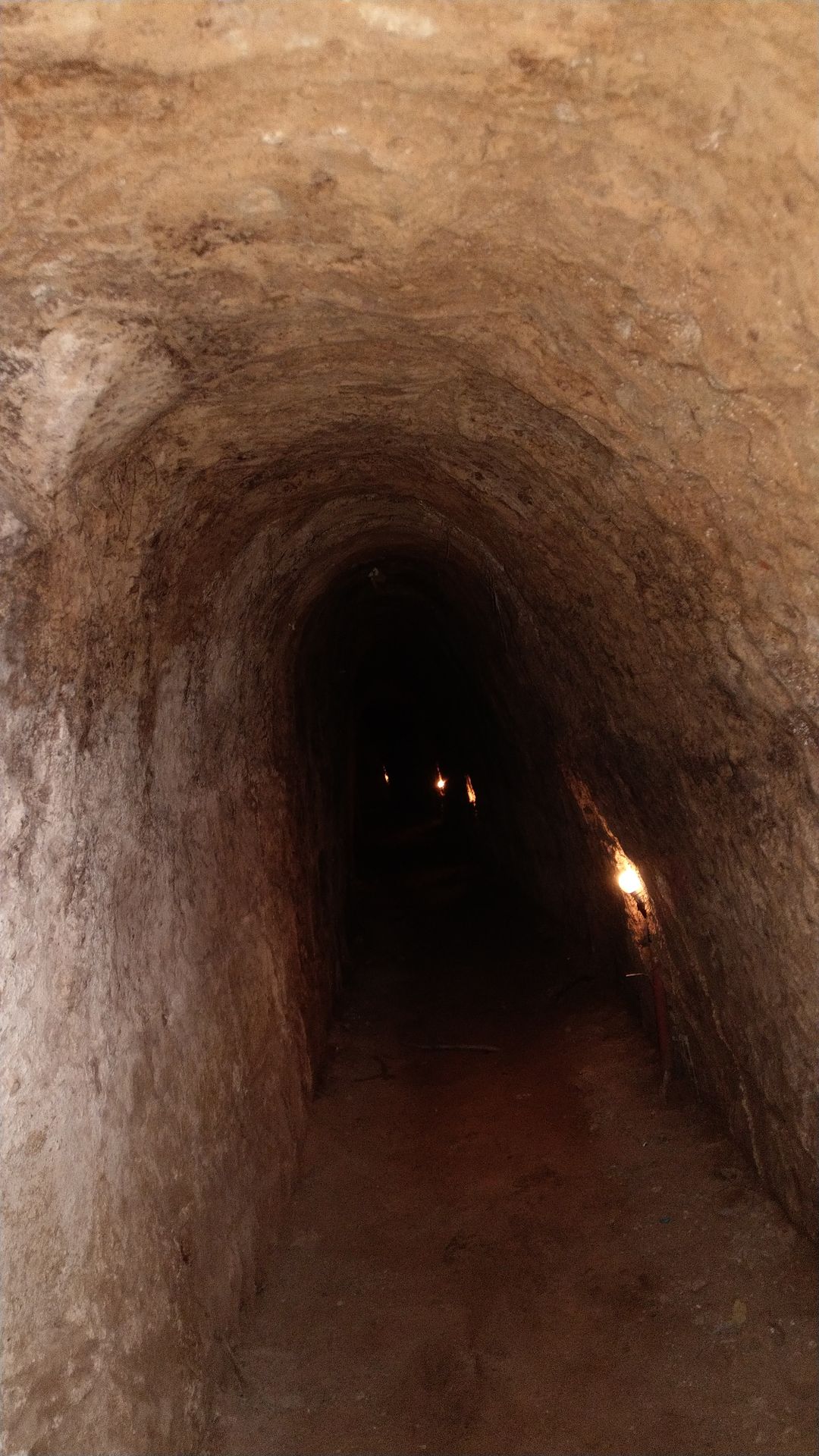
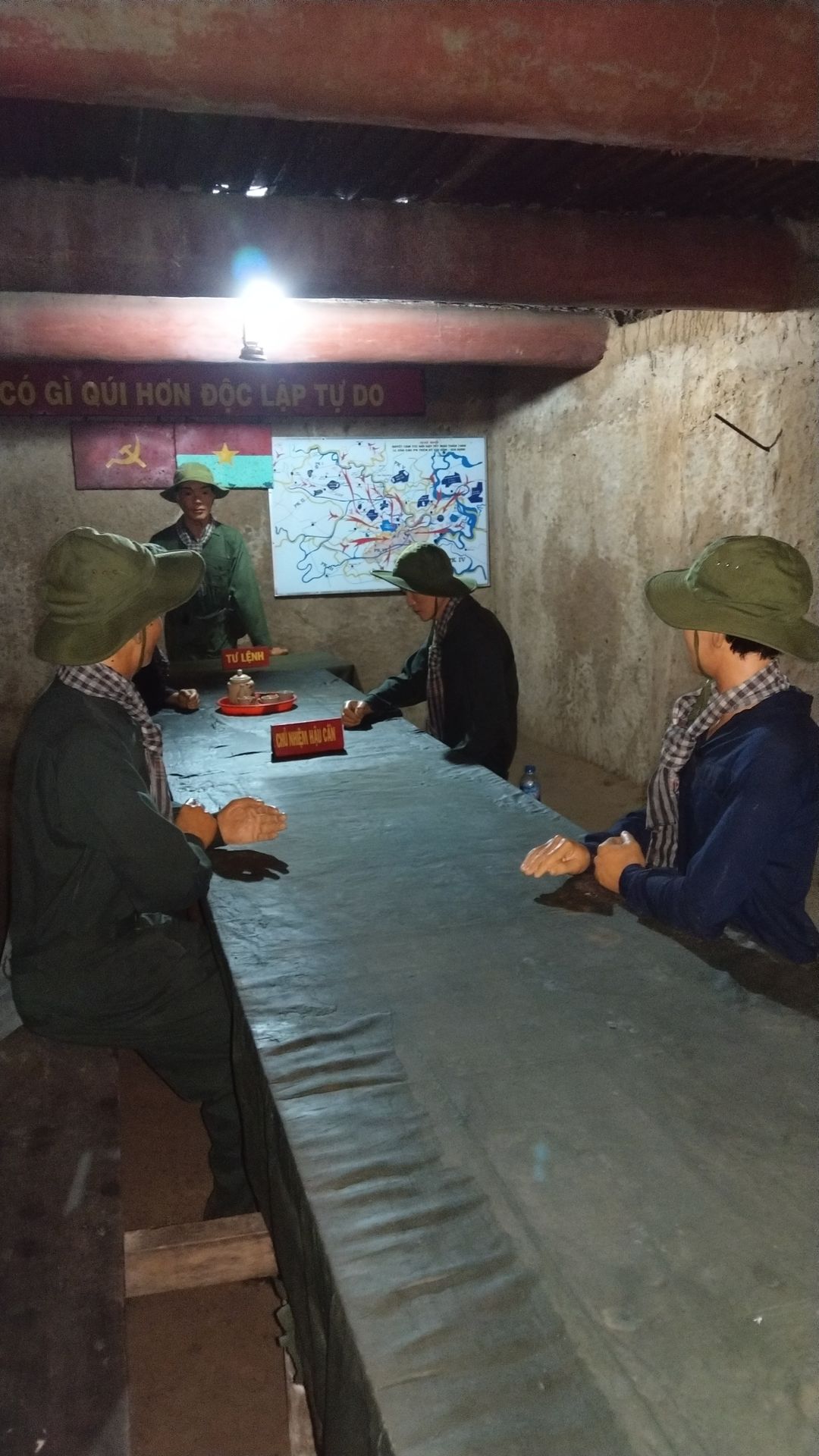
After crawling through several tunnels, a sumptuous meal awaited us: tapioca, a plant with edible roots that tasted mainly like raw potatoes, but was the staple food during the war.
Overall, the tunnels were once again a very interesting place, but they were also associated with great tragedy because out of the 17,000 people who inhabited the tunnels, only 3,000 survived the Vietnam War, and even they suffered emotional trauma. According to a guide, today this place is no longer a place of revenge, but a place to come together and preserve peace.
ਨਿਊਜ਼ਲੈਟਰ ਦੀ ਗਾਹਕੀ ਲਓ
ਜਵਾਬ
